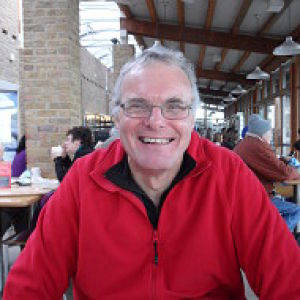Our guide at Eyam Church
On our last day we travel to the plague village of Eyam to visit the National Trust place Eyam Hall and to learn about the famous story of the impact of the 1665-1666 outbreak of the bubonic plague in this isolated village.
We arrived before the site was opened so retired to a tearoom in the village for coffee and scones. It turned out that we chose the right place as subsequent investigations proved they had the best scones. We didn't have any more during the day but the others just didn't look as good.
We took advantage of a guided walking tour of the village to learn about the story of the plague, stopping at various sites to see where whole families had been wiped out and finding out how the village tackled containing the plague. We learned about the main players in the story; the clergymen, the Earl of Devonshire and the tailor who brought the disease to the village in a sack of second hand clothes brought from London.
Over 260 people from a population of 750 or so died during the epidemic. There were many poignant stories and some amusing tales too. Only two people who caught the plague recovered but it was also interesting that many mothers didn't catch the disease but had the massive distress of burying all their children and husband. It turns out they had a gene which gave them immunity which may have been switched on in childbirth. This same gene is being used in investigations into contemporary diseases such as Ebola and AIDS.
We enjoyed a tour around Eyam Hall too. A house where the story was very accessible and straightforward to understand. It had been lived in by descendants of the same family ever since it was built in 1696, some 30 years after the plague.
After Al and Liz had left to travel south we went for a late evening walk down to Buxworth on the Peak Canal for s walk through history, seeing the other end of the Cromford and High Peak Railway where it met the Peak Canal. All very interesting.

Comments
Sign in or get an account to comment.


